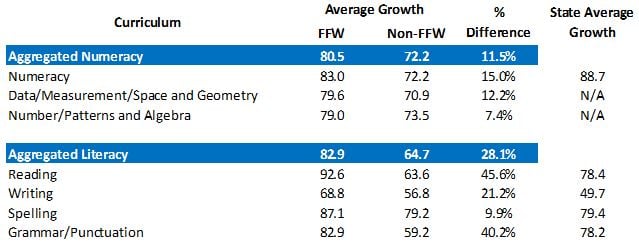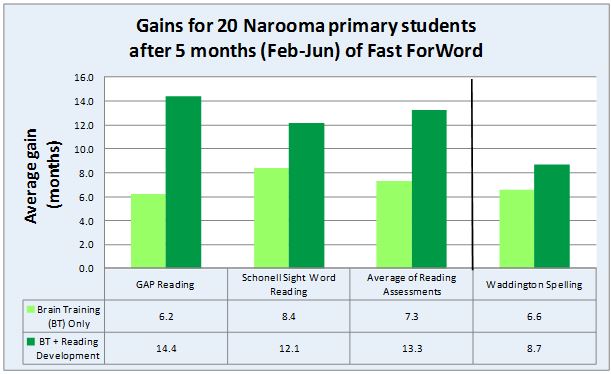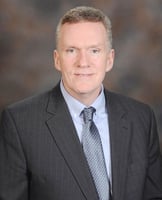Celebrating its 125 year anniversary this year, Narooma Public School, located on NSW’s south coast, has seen a lot of changes since the first students started in 1889. The slate boards and chalk in the classrooms of the nineteenth and twentieth centuries have been replaced by electronic whiteboards, computers and the Internet.
The current Principal and teachers at Narooma have not only kept pace with the changes, but they are leading the way by using the latest neuroscience based educational tools to help their students build their learning capacity and read better.
In 2012 the school implemented the Fast ForWord program for a small group of students. The results were good and under the guidance of Learning and Support Teacher, Julie Phelps, and with the support of local benefactors, the program has been continued in 2013 and 2014. Now, 90 students have done the brain training and reading development exercises.
The Growth of students from Year 3 to Year 5 on the NAPLAN assessment showed some amazing results.
On every area of the curriculum assessed by the NAPLAN assessment, the average growth of all the students who had completed Fast ForWord was greater than the average growth of the students who had not completed FFW.
This included all students since 2012 through to 2014. This is illustrated by this data showing the growth for each curriculum area and the difference between each group and the state average growth for each area of the curriculum assessed.

There were also some exceptional individual growth results. One student had the following growth results:

All literacy areas were above the state average (where data was available).
After using Fast ForWord, the students achieved reading gains of up to 14 months:

LearnFast interviewed Narooma’s Learning and Support teacher, Julie Phelps, about the school’s experience with Fast ForWord. Julie Phelps explains:
How Narooma Public School was introduced to Fast ForWord
The Assistant Principal responsible for all Learning and Support teachers in our area came to our Learning and Support meeting at Narooma Public and we were discussing those students who just don’t progress as much as we would expect. We deliver programs but some of these students just don't make adequate progress and often do not retain what they have learnt. She told us that Merimbula Public School were implementing a new program called Fast ForWord that addressed issues related to developing learning capacity.
So towards the end of 2011, I went to Merimbula with a couple of other teachers and met Kim Peters (Learning and Support Teacher at Merimbula Public) and looked at the program. We were quite excited about it. On another visit, a parent on the P & C and another staff member went to Merimbula and they were also impressed with the program.
Our first trial group was in mid-2012, and this is now (in 2014) the third year that we've implemented Fast ForWord.
How the school community helped
A benefactor has paid for the initial setup of computers and program fees. The P & C paid for my training and registration.
I have a room that's solely designated to Fast ForWord and my small group Reading programs. The only other time the room is used is by staff when we have video conferencing or meetings. So no one else uses the computers so they can't be corrupted which is great. If I have to make adjustments to my timetable the computers are always available so students don’t miss sessions.
When we first started, I was only working with five children each session and I had two groups per day. We were happy with our results and that's when we increased student participation to two groups of 10 per semester. We are doing the same this year; so forty students participate each year. That’s a total of 90 students who will have completed Fast ForWord by the end of this year.
We’re lucky because of the support of our benefactors Dr Jenny Wray and Jock Munroe from the Lighthouse Surgery in Narooma. I sent them the results and they were very happy with them. They asked how else they could assist with the program’s implementation and paid for another five computers and more furniture so then we could take ten students at a time. This permits me to have two lots of ten students a day.
The Lighthouse Surgery Scholarship Support funds nearly everything. We have two other benefactors who contribute a smaller amount to help the program continue.
Selecting students
For the very first group, we selected children from Years three to five and considered children that didn't necessarily have an intellectual disability, though they might have scored low average on general I.Q. tests. One child had a hearing loss when she was younger. Other students were suspected to be attention deficit, whether they had hyperactivity or just A.D.D. All were students who were not making the progress we expected they could.
Students that for whatever reason just don’t seem to be performing to their potential are often the ones that I see the most progress with.
I've had parents ringing up wanting their children to be on the program and generally we wait until the student either fit the grade or criteria the Learning Support Team has determined for the particular cohort.
Initially I did a wide range of pre and post assessments including auditory processing delay assessments and varied Literacy assessments. I now have reduced this to four Literacy assessments including reading comprehension, sight words and spelling and the FFW RPI (Reading Progress Indicator).
Communicating with the parents
At the beginning of each semester I wait until the students have settled in and are more confident with the activities. By about week five I have the parents come in and watch a PowerPoint presentation and I talk to them about the program. By that time the students know the program reasonably well so they sit with their parents and show them what it's all about.
Some parents at first might think the students are just playing games and it's not real learning. I explain what the program is developed to do and offer them data, print outs and copies of research supplied by LearnFast. For some parents this is the first time Neuroplasticity has been introduced to them.
I've never had anyone withdraw his or her child. Some parents are just surprised when they see the program and that it looks so gamey. When the students challenge their parents to try and do activities like the Sky Gym exercise or the Jumper Gym exercise that changes their mind. The parents find it is harder than they expect so they realise it's not as easy as it looks or just a game.
I show the parents the higher Reading levels of FFW such as Reading 1, 2 and 3, so they know what the children progress to. They see those as more real Literacy learning. But I emphasise that the earlier levels are about developing the neuropathways and are essential to developing their child’s learning capacity.
Parents who want their children on the program must sign a permission note. I send them a letter that is a combination of the LearnFast suggestions and my own requirements. I emphasise the importance of attending every session. I have had parents bring their children in when they're unwell just to do Fast ForWord program and then take them home again.
Communicating with other teachers
On the whole teachers are very supportive. Sometimes you can see differences in students even if you can't quantify a huge improvement in their Literacy scores. Staff also see this. You see students are more on task, more alert, they're being more responsible for their own actions, they are more motivated to engage and do their best and their behaviour improves. More importantly their self-esteem as a learner improves. In Fast ForWord sessions they come in on time enthusiastically, sit down and log themselves in and sit for 50 minutes and they work hard. Some students ask to come in at lunchtime to catch up, try and finish a level or just get ahead. They become more motivated – self-motivated. These changes spill over into the classroom as well.
I've sometimes done pre and post teacher surveys, but I don't do them all the time. On the whole the teachers were positive about the end results.
Motivating the students
I'm really big on giving out the award cards provided by the Fast ForWord program. One of the other things I do is I have cards with every student’s name on them. When the students get a personal best score, they get two cards and if they go up a level they get one. The cards go into a box and every couple of weeks a name gets pulled out, the person drawn gets a movie pass to the local cinema.
Those extra motivations are hugely effective. The students come up to me after the session, "I got seven cards today," or “Today I got eleven that’s my best ever.”
As well, if the student goes up more than 5% on their weekly goal from the day before, they get another card. If they meet their goal, they get another card. All these things they are aware of and strive for. And it's surprising it doesn't matter whether they're in Year Three or Year Six. They're riding on it and if I forget to give them one, they're pretty quick to tell me, "You didn't give me one for a personal best" and so on. That extra motivation, it really works. For the higher levels I've made my own cards for when they get into Reading 1, 2 and 3. I find that they still love getting rewarded for every game they finish.
Each Friday I also send home their weekly report to share with their family. I know some students have a folder dedicated to their rewards and FFW weekly reports.
Would you like to download a copy of this interview?
DOWNLOAD - How an Australian School Improved Reading & Maths with the Latest Brain Science



